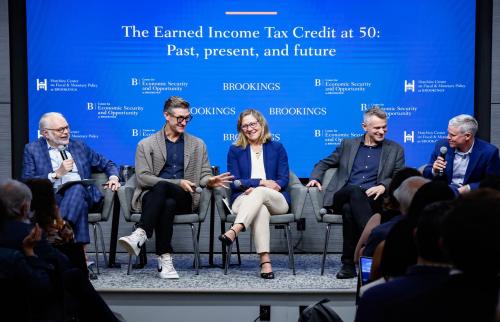Across the political spectrum, almost everybody agrees that stronger economic growth would be a good thing. But there is little agreement on how to achieve it. Nor is there much solid evidence; this is an area where political ideology runs very far ahead of economic science.
But in one area there is something close to unanimity: increasing labor force participation is very likely to lift the economic growth rate. More people working means more goods and services being produced and consumed.
In recent decades, male labor force participation has been declining in most advanced economies. In the U.S. female participation has started to dip in recent years, too. In fact, weaker labor market recovery during recent business cycles is due to a slowdown in the rate of growth in female employment, according to a new paper by Fukui et al. (For a full discussion see “What we know and don’t know about declining labor force participation: A review” by Isabel Sawhill and Eleanor Krause).
Reversing the decline in labor force participation trends is, then, an important goal for public policy. A first step is to understand the various factors influencing attachment to the labor market, for both men and women.
Women’s work: Caring responsibilities and paid employment
What barriers do women face in pursuing paid work? Research by Blau and Kahn suggests that one-third of the decrease in women’s employment in the U.S. relative to other advanced countries is related to the lack of benefits such as paid leave. The most common reason given by women for being out of the labor market is caring responsibilities:
It is important to note that today, women are not typically forced into these caring roles; polls suggest that this is a positive choice on their part. Of course, gendered social norms still play an important role—but that is a discussion for another day. And there are many women (and increasing numbers of men) who want to be able to combine a successful paid working life with engaged caring roles.
Here policy may be able to help. Paid parental leave laws in California and New Jersey appear to have increased labor force attachment among women who would otherwise have exited the labor market temporarily to give birth. Lawrence Berger and Jane Waldfogel show that women with access to paid leave are more likely to take longer periods of leave following a birth than women without leave coverage, but they are also 40 percent more likely to return to work after giving birth than those without access to leave. Allowing working mothers—and fathers—to take some leave without fearing lost income could strengthen attachment to the labor force and therefore increase national economic output.
There has been considerable discussion of paid parental leave in the U.S. President Trump promised a national scheme in his 2019 State of the Union address, and his FY 2020 budget pledged $20 billion for paid parental leave over the next decade. There is growing bipartisan support for more paid leave provision, as the work of our AEI-Brookings Project on Paid Family Leave has demonstrated (see the main reports here and here and a blog series here).
Of course, caregiving goes beyond looking after children. It includes caring for sick or elderly relatives, especially parents; eldercare as well as childcare. Paid parental leave is a good start, but diverse caregiving needs go beyond the need to care for a new baby. (The AEI-Brookings Project has commissioned a series of research papers to fill in the existing gaps of knowledge in the realm of family caregiving and medical leave).
Men: Too ill to work?
What about men? Here the story is different. While some men—and more men than in the past—are engaged in care work, the most common reason given for being out of paid work is being ill or disabled:
For both men and women, social norms and social acceptability may bias the self-reported reasons for non-participation by gender. But the pattern is nonetheless striking: illness or disability loom large for men, and caregiving for women.
Paid leave: Not just for parents
The obstacles to labor force participation vary widely, in terms of their scale—but also their predictability. Having a baby is an event that workers and employers can potentially plan for, but sickness can be sudden. A more inclusive paid family leave policy would recognize that employee productivity—another driver of economic growth—depends on workers having flexibility to deal with life’s caregiving challenges.
Paid leave is often framed as a social issue. But to the extent that it boosts labor force participation or productivity, it should be seen as an economic policy lever. An inclusive federal paid leave policy—for a range of caregiving responsibilities and for personal medical reasons—is an economic issue, too.
The Brookings Institution is committed to quality, independence, and impact.
We are supported by a diverse array of funders. In line with our values and policies, each Brookings publication represents the sole views of its author(s).









Commentary
Paid leave as fuel for economic growth
June 27, 2019